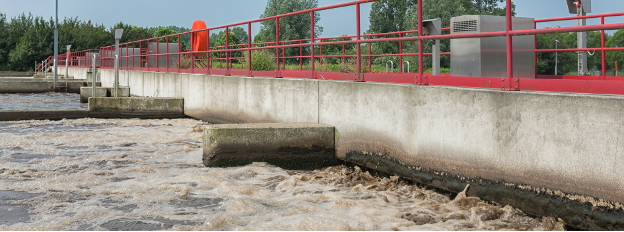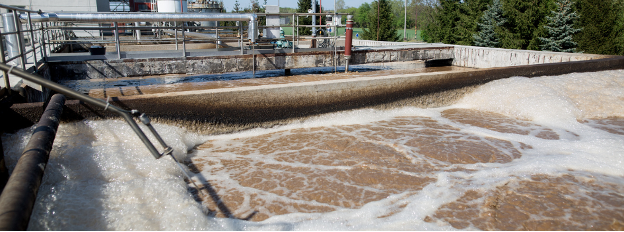
Methane-to-Power: How Wastewater Becomes Energy
Wastewater can be a valuable source of energy if properly treated and processed. The process of harnessing power from wastewater is called wastewater-to-energy (WTE), and it involves converting the organic matter into a renewable energy source.
The Methane Challenge
Methane is a potent greenhouse gas, with a global warming potential over 25 times that of carbon dioxide. It’s a byproduct of organic matter decomposition in environments with limited oxygen, such as landfills and wastewater treatment plants. What can we do about it? To combat the detrimental environmental effects of methane emissions, innovative technologies have been developed to capture and utilize this gas effectively.
The Role of Wastewater Treatment
Wastewater treatment plants are a primary source of methane emissions. As organic matter, like sewage, is broken down by bacteria in anaerobic (low-oxygen) conditions, methane is produced. Traditionally, these emissions were released into the atmosphere, contributing to climate change. However, the development of methane-to-power technology has transformed this challenge into an opportunity!
Converting wastewater to energy involves several steps, starting with collecting and transporting the wastewater to a treatment plant. The wastewater undergoes several treatment processes at the treatment plant, including screening and sedimentation, to remove any large debris and settle out the solids. The wastewater then goes through a biological treatment process, where microorganisms break down the organic matter into biogas (also called renewable natural gas). The biogas can then be collected and used as a renewable energy source.
Wastewater-to-Energy Process
The wastewater-to-energy process is a sustainable and environmentally responsible method that converts wastewater, particularly sewage, into usable energy. The key element in this process is the recovery of biogas, which mainly consists of methane, produced during the natural breakdown of organic matter in wastewater treatment facilities. Here’s a step-by-step explanation of the wastewater-to-energy process.
- Wastewater Collection: Wastewater is collected from homes, industries, and commercial establishments and transported to a wastewater treatment plant. This wastewater contains a mixture of organic materials, solids, and water.
- Primary Treatment: In the first stage of treatment, larger solids and debris are removed from the wastewater. This primary treatment phase involves physical processes such as screening and sedimentation to separate out these solid materials.
- Secondary Treatment: In the secondary treatment phase, microorganisms are introduced to the wastewater. These microorganisms break down the organic matter in the water, a process known as biological treatment. This breakdown occurs in an environment with limited oxygen, called anaerobic conditions. During this process, methane gas (CH4) is produced as a byproduct.
- Methane Collection: The methane gas produced in the secondary treatment phase is collected from various stages of the wastewater treatment process. The primary sources of methane include anaerobic digesters and lagoons where organic matter decomposition occurs.
- Gas Purification: The collected methane gas is purified to remove impurities and moisture. This step ensures that the methane meets the required quality standards for combustion.
- Electricity Generation: Once purified, the methane gas is used to fuel power generators. These generators produce electricity through combustion, and the generated electricity can be used to run the wastewater treatment plant itself. Excess electricity can be integrated into the local power grid for community use.

Wastewater-to-Energy Advantages
Wastewater-to-energy technology helps promote a circular economy where waste is used as a resource, reducing the environmental impact and increasing the sustainability of our communities.
1. Sustainable Energy Source
Methane-to-power technology transforms wastewater treatment plants into sustainable energy producers. By harnessing the energy potential of methane, these facilities reduce their reliance on conventional fossil fuels, contributing to a greener energy mix.
2. Lowering Greenhouse Gas Emissions
By capturing and converting methane emissions, this process helps to mitigate the environmental impact of wastewater treatment. It prevents harmful methane from entering the atmosphere, thus reducing the overall greenhouse gas footprint.
3. Cost-Efficiency
Turning waste into energy provides cost savings for wastewater treatment facilities. The electricity generated on-site can offset energy costs, making the treatment process more economically sustainable.
4. Community Integration
Many wastewater treatment plants are now integrated into the local power grid, providing clean energy to nearby communities. This creates a localized, renewable energy source and strengthens the connection between utilities and the people they serve.

The Future of Wastewater-to-Energy
As the world seeks cleaner and more sustainable energy solutions, wastewater-to-energy technology continues to gain momentum. It showcases the power of innovation in addressing environmental challenges while producing valuable biofuel energy. With ongoing research and development, we can expect even more efficient and widespread adoption of this technology, further reducing greenhouse gas emissions and contributing to a cleaner, greener future.
Discover DXP’s Industrial Wastewater Services
Ready to elevate your industrial wastewater management? Explore DXP’s comprehensive range of services designed to optimize your wastewater processes and enhance environmental sustainability. Take the first step towards efficient and eco-friendly solutions.
Contact us today to learn more.

